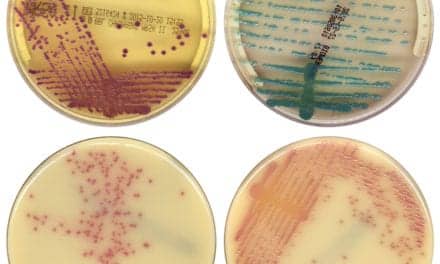A team of researchers led by Aurimas Vyšniauskas, PhD, senior research scientist at the Center for Physical Sciences and Technology, Vilnius, Lithuania, has changed the structure of viscosity sensors and enhanced their viscosity-sensitivity range by a very significant margin.1
Viscosity sensors are small molecules used to measure viscosity around them, and they are used as tools to study what is happening inside a living cell. Various diseases, including Alzheimer’s disease and diabetes, are known to cause viscosity changes in cells. With sensors of improved sensitivity, it will be possible to determine better what adverse effects come with the change of viscosity in a cell.
“I call myself a craftsman of tools—molecule-kind tools,” says Vyšniauskas. “Personally, I will not cure Alzheimer’s, nor diabetes. But if I am successful, I will finally manage to create a tool that would help other scientists treat these and other incurable diseases that are popularly called civilizational epidemics.”
At the early stage of diabetes, the viscosity of the membrane of liver cells increases. The receptors of insulin in the membrane of such cells continually deliver signals and connect with one another, but the increase in viscosity leads to poor connections, the regular cell activity gets disrupted, and the cells are no longer able to recognize insulin.
“Up until this point, the most popular viscosity sensor could measure cell viscosity from 5 to 1500 viscosity units of measurement, or cP,” says Vyšniauskas. “We managed to increase this range, and our method can measure viscosity in the range of 0.5 to 50000 cP. This is a big accomplishment. Imagine a thermometer that could only measure temperature from 10º to 20º C. Metaphorically speaking, we have created a new thermometer with a measurement range from –10º to 60º C.”
Viscosity sensors are currently used only by scientists who study them. But according to Vyšniauskas there is no doubt that once the method is developed to become a reliable tool, it will be used by both biochemists and cell biologists.
The breakthrough in viscosity measurement resulted from collaboration between scientists from the Center for Physical Sciences and Technology and Vilnius University.
“Since physical chemistry is an interdisciplinary field, we needed knowledge from various scientific fields to make this achievement possible,” says Vyšniauskas. “As I am a chemist, I need to consult with theoretical physicists who are specialists in theoretical calculations, which are crucial for explaining how viscosity sensors work. I also cooperate with other chemists, particularly those who synthesize molecules. Biologists are also involved, as the implementation of our research would be in their field, biology. The collaborative process is fascinating.”
Reference
- Toliautas S, Dodonova J, Žvirblis A, et al. Enhancing the viscosity-sensitivity range of a BODIPY molecular rotor by two orders of magnitude. Chem Eur J. 2019;25(44):10342–10349; doi: 10.1002/chem.201901315.
Featured image:
Aurimas Vyšniauskas, PhD. Image courtesy Vilnius Center for Physical Sciences and Technology.





